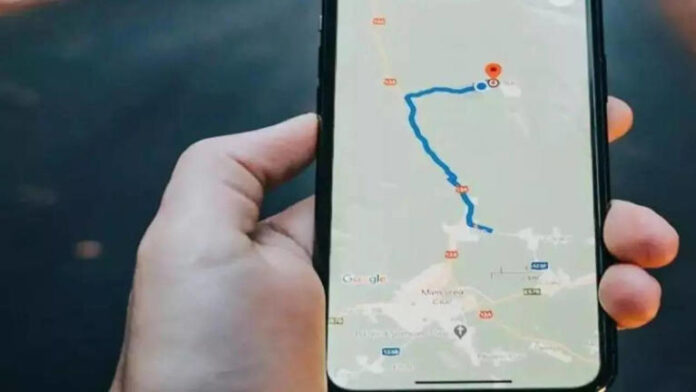An Assam police team found itself misled by Google Maps and inadvertently crossed into neighboring Nagaland while on an official mission. The mix-up, which occurred during a routine operation, has sparked both curiosity and concern, raising questions about the reliability of navigation apps and their potential consequences in sensitive regions.
The incident unfolded when the Assam police team was on a mission to track down and apprehend suspects in a border region near the Assam-Nagaland boundary. According to the police, they relied on Google Maps to guide them through the unfamiliar terrain. However, due to what seems to be a GPS or mapping error, the team unknowingly strayed across the inter-state border and found themselves inside Nagaland.
Initially, the officers did not realize they had crossed into Nagaland, as the transition between the two states is often not marked by clear signage, especially in rural areas. The region is known for its challenging geographical features, with dense forests, hilly landscapes, and narrow roads that make navigation tricky even for locals. As a result, the Assam police team continued on their path, unaware that they were in a different state.
The situation only became clear when local Nagaland authorities, observing the unrecognized vehicle and the unfamiliar police team, intercepted them. The Assam police officers were informed that they had inadvertently crossed the state border, which is a sensitive issue given the region’s history of inter-state tensions and territorial disputes. As the situation unfolded, both Assam and Nagaland police officials intervened to resolve the matter amicably, ensuring there was no escalation.
The incident quickly gained attention after reports emerged that the Assam police had relied on Google Maps to guide their route. The malfunction, which led the police team astray, is believed to be a result of mapping errors, as the app is sometimes not up to date with the latest geographical boundaries and road conditions. This case highlights a significant concern about the accuracy of GPS and mapping technologies, particularly when used in sensitive or disputed regions.
In the aftermath of the incident, both Assam and Nagaland authorities issued statements emphasizing the importance of caution when using digital tools for navigation, particularly in regions with complex boundaries. The Assam police clarified that the team had no ill intentions and that the border crossing was purely accidental. Both states have a history of disputes over land and resources, and the event underscored the delicate nature of inter-state relations.
Google, when contacted for comment, acknowledged the issue and assured that it would review the accuracy of its maps for the affected region. The tech giant pointed out that while mapping services are designed to be as accurate as possible, there can be occasional discrepancies, especially in remote or less-traveled areas. They urged users to exercise caution when using navigation tools and suggested that official routes and guidance from local authorities should be prioritized, especially in sensitive or politically complex regions.
For the Assam police team, the incident serves as a reminder of the limitations of relying solely on digital tools for navigation, particularly in areas with ambiguous borders. While GPS technology has revolutionized the way we navigate the world, it is not infallible, and misinterpretations can occur. The Assam police have stated that they will take extra precautions in the future and rely on additional resources, including local knowledge and official maps, to avoid any further mishaps.
The event also sparked a larger conversation about the role of technology in law enforcement and public safety. With the increasing reliance on digital tools, such as Google Maps, for operational planning and decision-making, experts have raised concerns about the need for greater oversight and verification, especially in situations where jurisdictional boundaries are at play.
As the authorities in both Assam and Nagaland worked together to de-escalate the situation, the event ended without incident. No harm was done, and the police team was allowed to continue their mission. However, the episode remains a cautionary tale about the potential pitfalls of technology and the importance of double-checking routes, especially in areas where borders and jurisdictional issues are not clearly defined.
While the incident has been resolved peacefully, it is likely to fuel discussions about the need for more accurate and reliable navigation tools, particularly in sensitive border regions, and the importance of blending traditional knowledge with modern technology in ensuring the safety and efficiency of law enforcement operations.




